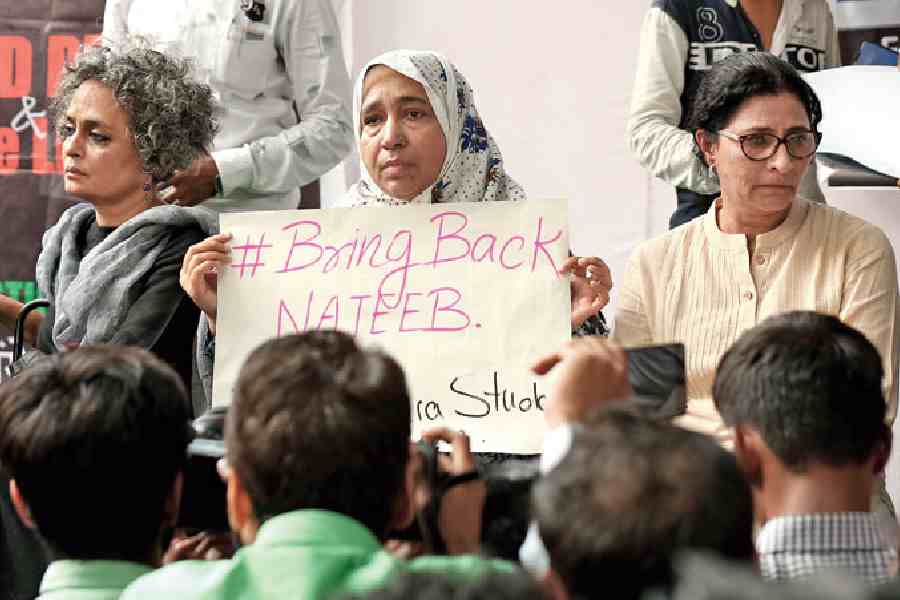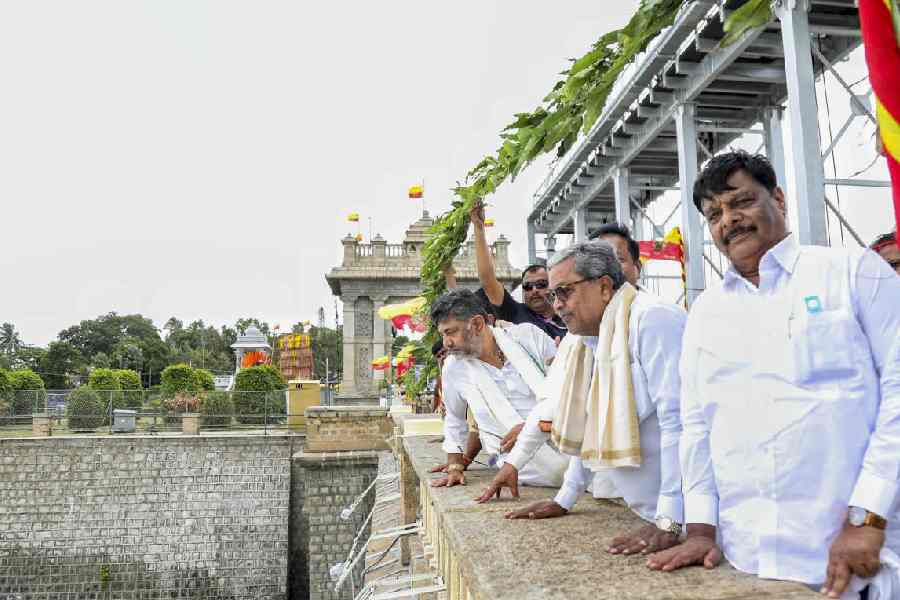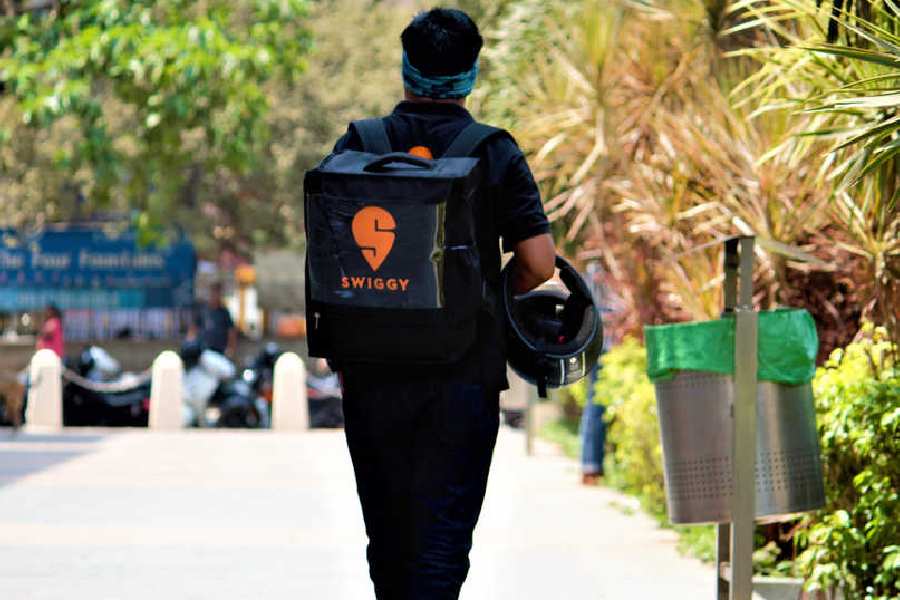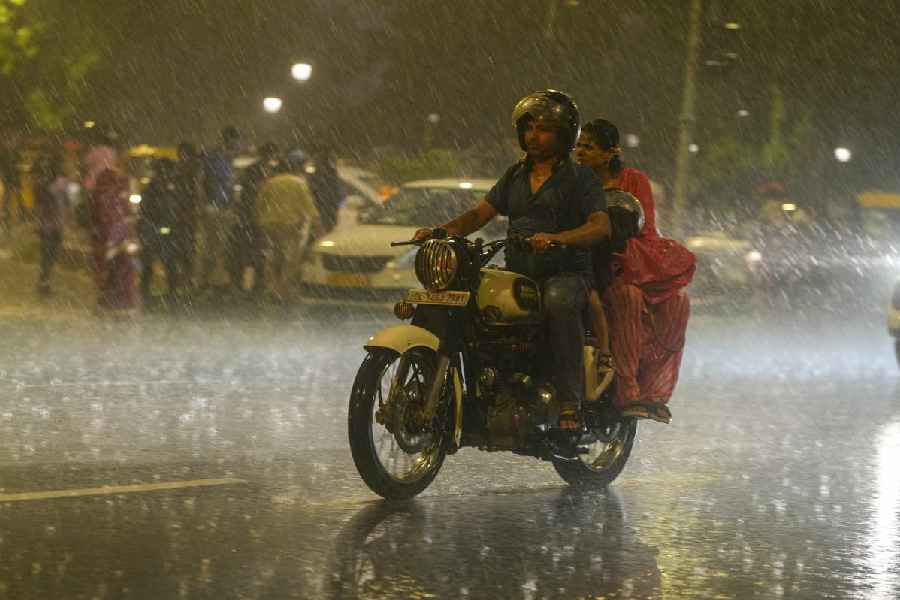 |
| Neerja |
Washington, Dec. 17: The heroism of an Indian air hostess in terminating a hijacking, which riveted all of India’s attention 17 years ago, reached its conclusion and brought closure to victims of the tragedy when the Palestinian leader of the hijackers was sentenced here yesterday to three consecutive terms of life imprisonment and a further 25 years in jail.
Several Indians were killed in the attempt to hijack the Pan Am Boeing 747 at Karachi airport on its way from Mumbai to New York, but it was the heroism and the alertness of Neerja Bhanot, an Indian stewardess on the plane, which made the incident a legend of sorts for Indians at that time.
Neerja was greeting emplaning passengers at the aircraft's door when she noticed the four armed hijackers, masquerading as airport security staff in uniform, arriving in a van and boarding the plane.
With remarkable presence of mind, she activated a hijack code on the aircraft's intercom and within seconds, the pilot and the fligt crew ejected from the Jumbo plane, foiling the hijackers’ plans to fly the aircraft and the passengers to Cyprus and demand the release of 1,500 Palestinians jailed in Israel.
Frustrated and angry, the hijackers, members of the dreaded Abu Nidal terrorist organisation, commandeered the plane all the same. When the planes auxiliary power unit failed at the end of 15 hours of futile negotiations, the plane plunged into darkness and the terrorists began shooting passengers and throwing hand grenades at them and the crew, who had been herded into one end of the aircraft.
Two American citizens of Indian origin, Rajesh Kumar and Surendra Patel, were among the first to be killed. The indictment in the case before US district judge Emmet Sullivan reads like an Indian court document because of the large number of Indian passengers who had boarded the ill-fated plane from Mumbai.
Neerja was hit in the arm by fire from a Kalashnikov, but she managed to open a chute and let several passengers escape. Four more bullets struck Neerja, killing her. In all, 22 people died and more than 100 were wounded before the nightmare ended for the remaining passengers and crew.
The four hijackers and a fifth terrorist, who helped plan the hijacking, were caught and tried in Pakistan. But under General Zia ul Haq, Pakistan was, by then, well on its way to becoming the fountainhead of global terrorism.
So, the five men were sentenced to death, but their sentences were commuted to life imprisonment soon enough. What was worse, the leader of the hijackers, Zayd Hassan Abd al-Latif Masud al Safarini, was released a mere fortnight after the terrorist attack on the World Trade Center in New York.
General Pervez Musharraf had reduced his sentence in a series of amnesties.
But the Americans believed that justice had not been done in the case and US agents caught Safarini as he was trying to sneak into Jordan.
He was brought to the US, but justice department officials here preferred avoiding a trial, which would have forced the victims of the incident and their relatives to testify here and relive its horror 17 years later.
So a plea bargain was struck between Safarini and the US government under which the leader of the hijackers pleaded guilty to 95 charges and will spend the rest of his life in an American prison, possibly without parole.
Several Indian victims of the hijacking and their relatives, and at least one Indian member of the plane’s crew were present in court yesterday, but declined to speak to reporters because of legal opinion that they should not do so until Safarini’s sentence becomes formal after Christmas.










